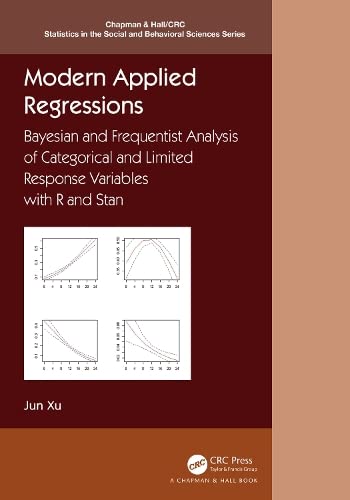

Most ebook files are in PDF format, so you can easily read them using various software such as Foxit Reader or directly on the Google Chrome browser.
Some ebook files are released by publishers in other formats such as .awz, .mobi, .epub, .fb2, etc. You may need to install specific software to read these formats on mobile/PC, such as Calibre.
Please read the tutorial at this link: https://ebookbell.com/faq
We offer FREE conversion to the popular formats you request; however, this may take some time. Therefore, right after payment, please email us, and we will try to provide the service as quickly as possible.
For some exceptional file formats or broken links (if any), please refrain from opening any disputes. Instead, email us first, and we will try to assist within a maximum of 6 hours.
EbookBell Team

4.1
100 reviewsModern Applied Regressions creates an intricate and colorful mural with mosaics of categorical and limited response variable (CLRV) models using both Bayesian and Frequentist approaches. Written for graduate students, junior researchers, and quantitative analysts in behavioral, health, and social sciences, this text provides details for doing Bayesian and frequentist data analysis of CLRV models. Each chapter can be read and studied separately with R coding snippets and template interpretation for easy replication. Along with the doing part, the text provides basic and accessible statistical theories behind these models and uses a narrative style to recount their origins and evolution.
This book first scaffolds both Bayesian and frequentist paradigms for regression analysis, and then moves onto different types of categorical and limited response variable models, including binary, ordered, multinomial, count, and survival regression. Each of the middle four chapters discusses a major type of CLRV regression that subsumes an array of important variants and extensions. The discussion of all major types usually begins with the history and evolution of the prototypical model, followed by the formulation of basic statistical properties and an elaboration on the doing part of the model and its extension. The doing part typically includes R codes, results, and their interpretation. The last chapter discusses advanced modeling and predictive techniques―multilevel modeling, causal inference and propensity score analysis, and machine learning―that are largely built with the toolkits designed for the CLRV models previously covered.
The online resources for this book, including R and Stan codes and supplementary
notes, can be accessed at https://sites.google.com/site/socjunxu/home/statistics/modernapplied-
regressions.